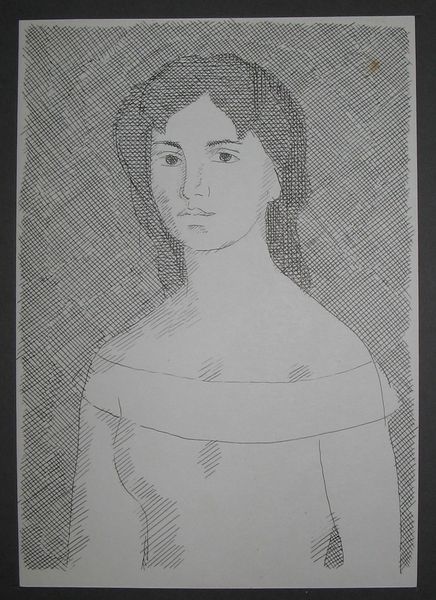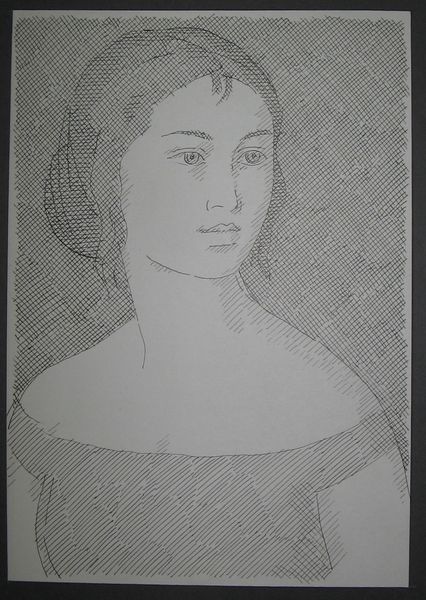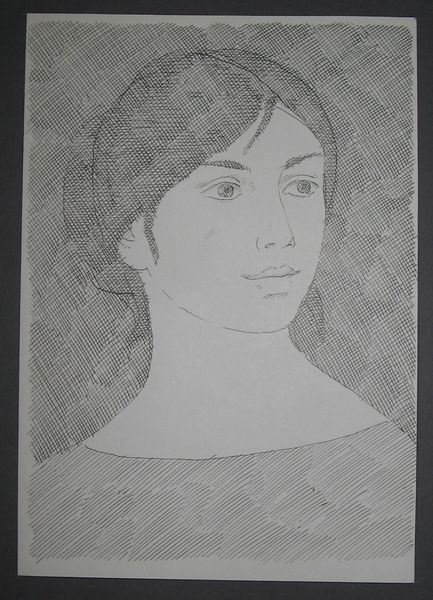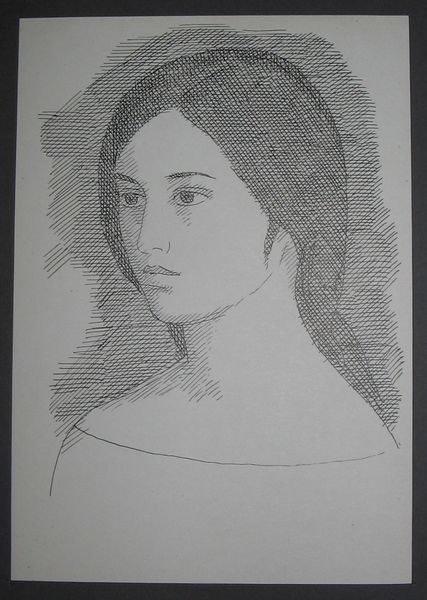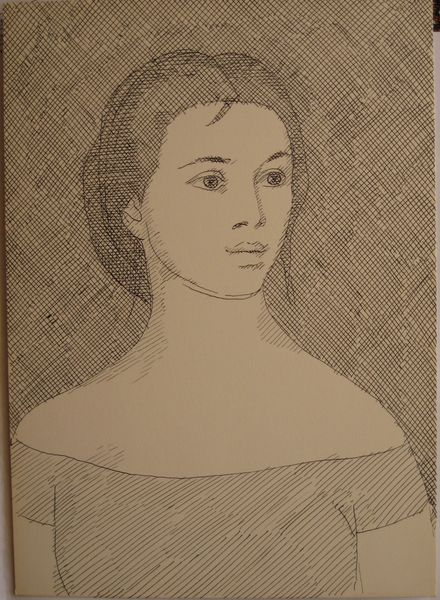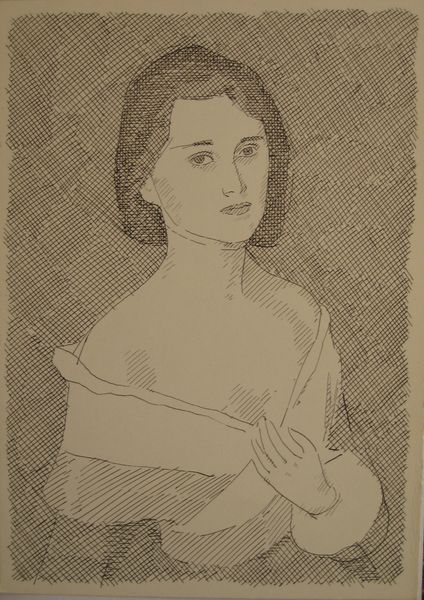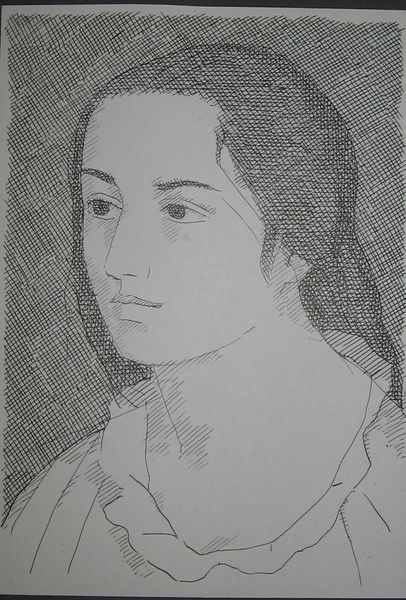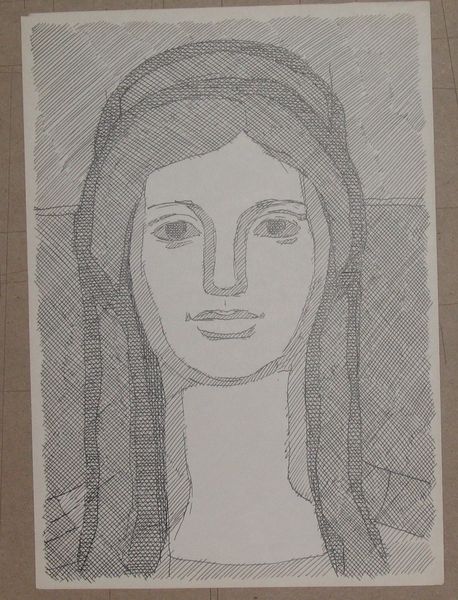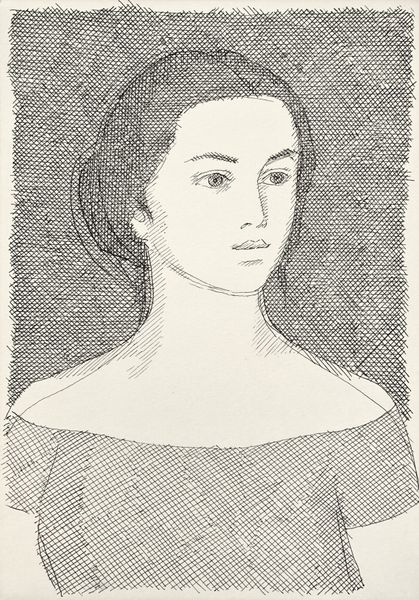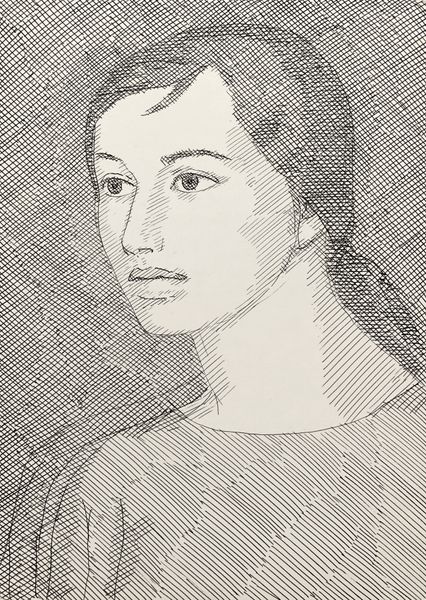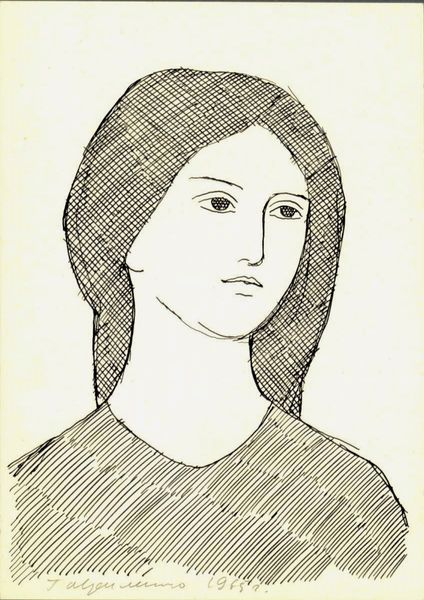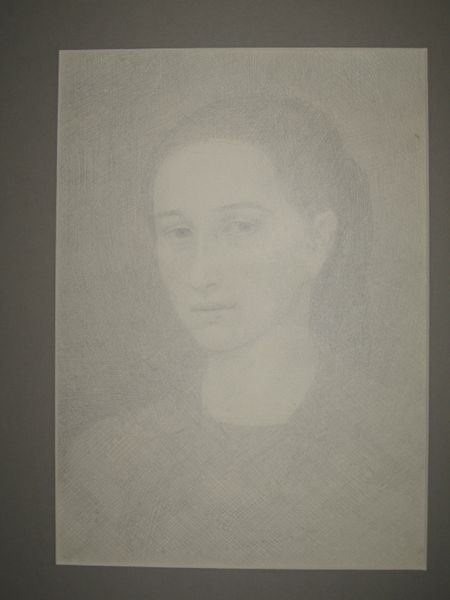
Female Image. From the series 'Search for Pushkin's Female Images' 1970
0:00
0:00
hryhoriihavrylenko
Private Collection
drawing, paper, pencil
#
portrait
#
pencil drawn
#
drawing
#
face
#
paper
#
geometric
#
pencil
#
line
#
portrait drawing
#
modernism
Copyright: Hryhorii Havrylenko,Fair Use
Editor: We're looking at "Female Image" from the series "Search for Pushkin's Female Images" by Hryhorii Havrylenko, created in 1970. It’s a pencil drawing on paper, a portrait with geometric patterns. The hatching feels almost like a screen; it’s a bit unsettling. What do you make of it? Curator: That unsettling feeling is worth exploring. The seemingly simple act of portraiture in 1970, particularly the choice of *how* to represent a female image, is laden with socio-political meaning. Havrylenko calls it "Search for Pushkin's Female Images," linking back to a Romantic ideal. But look at the modernism. The grid undermines a purely romanticized or naturalistic view. Does the title ironize the image? Editor: It's like he's questioning that ideal, deconstructing it with the linework. Was there a pressure on artists in 1970 to move away from romantic ideals? Curator: Absolutely. Think about the role of socialist realism, still influential at the time. Idealized representations of women as workers, mothers—constructs tied to specific social roles. How does this drawing challenge those? Editor: The geometric hatching almost flattens her, removing any sense of idealized beauty or individual personality. She becomes more of an idea than a person. Curator: Precisely. And the pencil medium, traditionally seen as preparatory, now becomes the finished statement. What do you make of the institutional context of exhibiting something like this, versus promoting purely socialist realist images of women? Editor: It feels like quiet resistance, a subtle questioning of established norms and expected representation, given that this work remained in private collection. Curator: Exactly! Considering the socio-political environment, and that many artworks critiquing socialist ideas at that time could be displayed, provides the viewer another important lens. What appears to be a formal exercise then transforms into subtle act of resistance. Editor: It really reframes how I see the image. Now, that initial feeling of unease has more depth and purpose. Thanks for highlighting the political elements; I would not have been able to formulate such interpretation by myself.
Comments
No comments
Be the first to comment and join the conversation on the ultimate creative platform.
